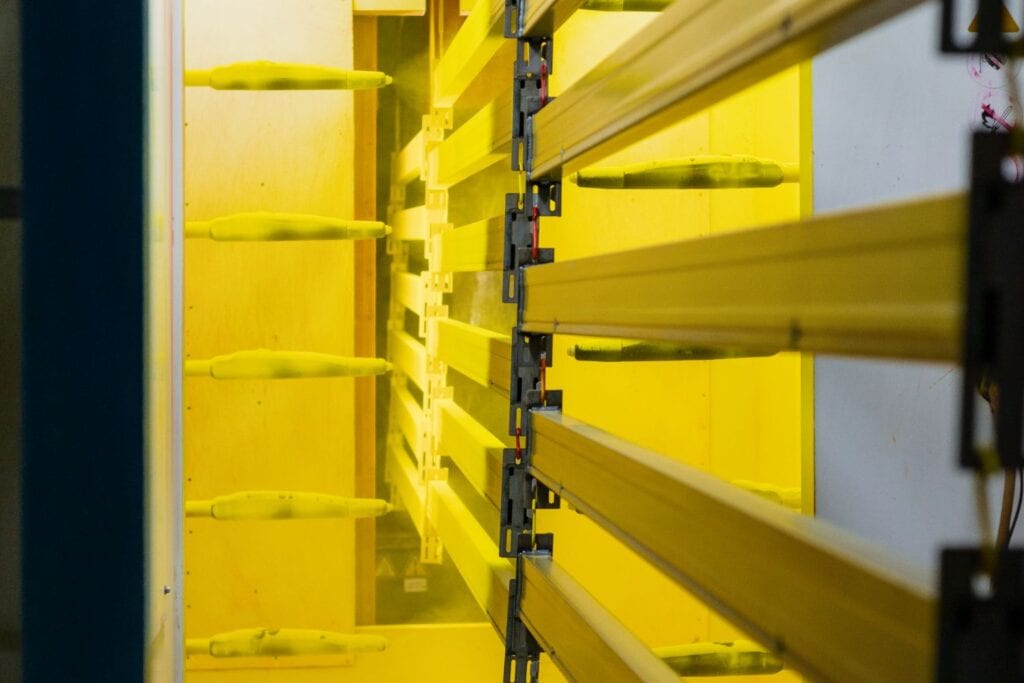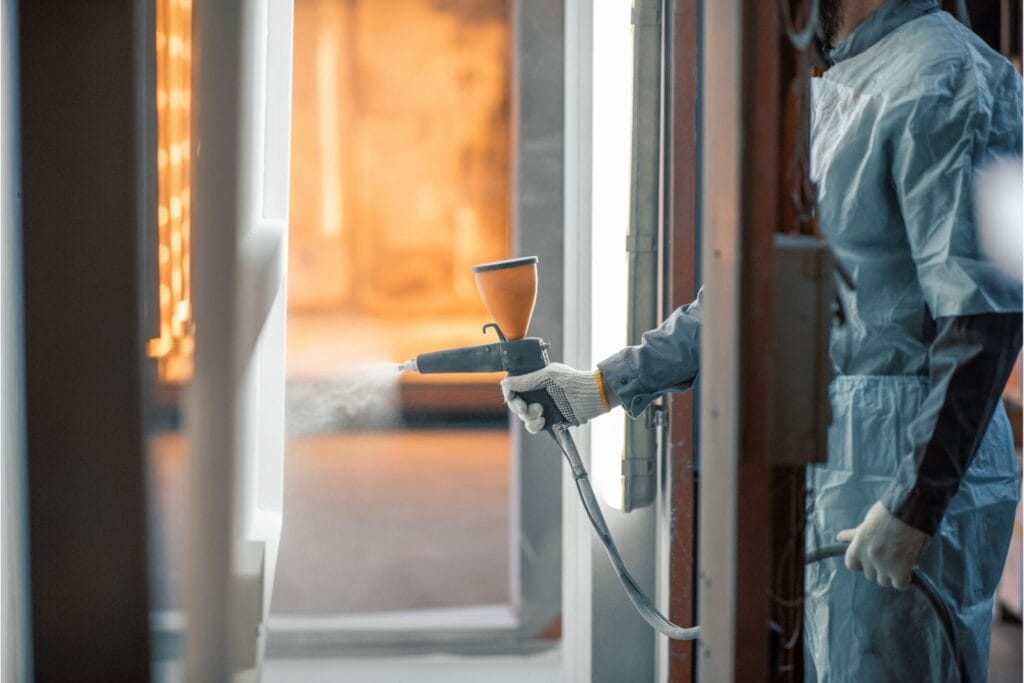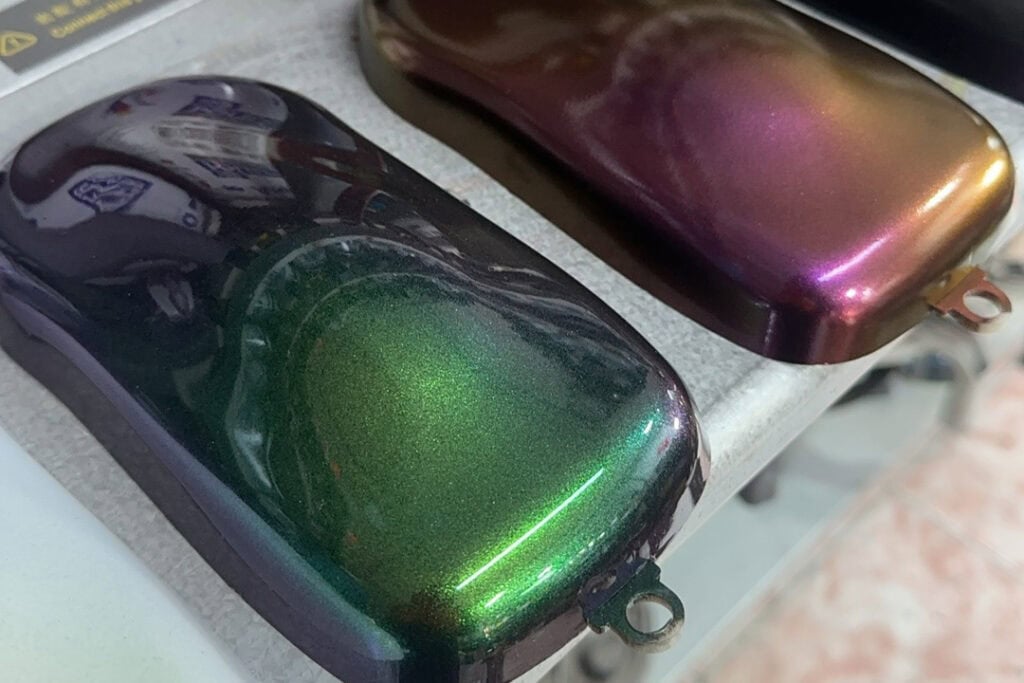Yes, you can use fluorescent pigments in powder coatings! These pigments enhance color vibrancy under UV light, making your products stand out. Notably, our high-temperature fluorescent powders can withstand temperatures up to 270°C, ensuring durability without sacrificing aesthetics.
Now that we’ve established the basics, let’s delve deeper into how to apply these pigments effectively in your production process.
What Are Fluorescent Pigments and How Do They Work?
Fluorescent pigments are unique compounds that emit vibrant colors when exposed to UV light, making them perfect for various applications. Unlike traditional pigments, which may appear dull under normal lighting, fluorescent pigments can appear strikingly bright, especially under black light.
These pigments are designed to absorb light energy and re-emit it at a different wavelength, producing a brilliant color that can attract attention and enhance product visibility. This property is particularly useful in industries like signage, automotive coatings, and recreational products, where standout aesthetics are essential.

How to Apply Fluorescent Pigments in Powder Coatings?
Applying fluorescent pigments in powder coatings requires careful consideration of several factors, including mixing ratios and application methods. Here’s a step-by-step guide:
Choose the Right Pigment: Ensure the fluorescent pigment selected is compatible with your base powder coating material. Different pigments have varying properties, so consult your supplier for recommendations. For instance, some fluorescent pigments are better suited for high-temperature applications, while others might be ideal for low-energy settings.
Mixing Ratios: Typically, fluorescent pigments are added at a ratio of 5-20% by weight to the base powder. For example, to achieve a vibrant color, you might mix 15% pigment with 85% powder base. Experimentation is often necessary to achieve the desired vibrancy and opacity.
Processing Conditions: During the application process, maintain consistent temperatures and avoid excessive moisture, as these factors can affect the performance of the pigments.
Curing Process: Proper curing is essential for achieving optimal durability and appearance. Ensure that the curing oven is set to the recommended temperature for the powder being used, usually between 180°C to 200°C, for a set duration. Curing times may vary based on the thickness of the coating and the specific powder formulation.
Quality Control: After application, inspect the final product under both natural and UV light conditions to ensure the fluorescent colors meet your quality standards. Adjust mixing ratios or processing conditions as needed to achieve the desired results.
What is the Thermal Resistance of Fluorescent Pigments?
Thermal resistance is a crucial factor when selecting pigments for powder coatings. Fluorescent pigments can vary widely in their thermal stability, impacting their suitability for high-temperature applications.
Understanding Thermal Resistance
Thermal resistance refers to a pigment’s ability to withstand high temperatures without degrading or losing its color properties. This is particularly important in industries where powder-coated items are exposed to heat, such as automotive or appliance manufacturing.
High-Temperature Fluorescent Powders
Our high-temperature fluorescent powders, for instance, can withstand temperatures of up to 270°C without losing their vibrancy or structural integrity. This makes them ideal for applications that may require high heat exposure during manufacturing or use. Many other fluorescent pigments might only tolerate temperatures between 150°C to 200°C, which can limit their application.
Testing and Validation
To ensure the thermal resistance of your selected pigments, conduct rigorous testing under controlled conditions. This might involve subjecting samples to varying temperatures over extended periods to observe any changes in color or performance. Documenting these results will help in making informed decisions regarding the most suitable pigments for your specific applications.
Safety Considerations for Using Fluorescent Pigments
Safety is paramount when incorporating any chemical into your production process. While fluorescent pigments are generally safe, it’s important to follow standard safety protocols:
Material Safety Data Sheets (MSDS): Always consult the MSDS for the specific pigments you are using. This document provides crucial information about handling, storage, and potential hazards, including flammability and toxicity.
Personal Protective Equipment (PPE): Ensure that all personnel handling pigments are equipped with appropriate PPE, including gloves, masks, and goggles. This will help prevent inhalation or skin contact, which can lead to irritation.
Ventilation: Adequate ventilation in the workspace is essential to minimize inhalation risks during the mixing and application processes. Consider installing local exhaust ventilation systems to further improve air quality.
Storage Guidelines: Store fluorescent pigments in a cool, dry place, away from direct sunlight and moisture. Proper labeling and containment are crucial to prevent accidental exposure or contamination.
Comparing Fluorescent vs. Phosphorescent Pigments
While fluorescent pigments are widely known, phosphorescent pigments are often confused with them. Understanding their differences can help you select the right type of pigment for your specific needs.
Key Differences
Fluorescent Pigments: These pigments can be categorized into two types. Daylight fluorescent pigments exhibit vibrant colors in natural light and become even more intense under UV light. In contrast, invisible fluorescent pigments appear white under regular lighting conditions but reveal a range of colors when exposed to UV light. However, it’s important to note that once the UV light is removed, these pigments do not emit any light in the dark, rendering them invisible.
Phosphorescent Pigments: These pigments, also called photoluminescent pigments, typically have a pale yellow-green or white appearance and possess the ability to absorb visible light. After exposure, they can glow in the dark for several hours, making them ideal for applications that require long-lasting visibility in low-light conditions. This unique property allows them to be effectively used in safety signage and emergency exit paths, providing critical illumination when needed.

Application Considerations
When deciding between fluorescent and phosphorescent pigments, consider the intended use. If you require immediate visibility, fluorescent pigments are the better choice. For applications where visibility in low light is necessary over time, phosphorescent pigments would be more appropriate.
Fluorescent Powder in Forensics and Other Applications
Fluorescent powders aren’t just limited to powder coatings; they have found uses in various industries, including:
Forensics: Fluorescent powders can highlight fingerprints and other evidence in crime scene investigations, providing enhanced visibility under UV light.
Art and Design: Artists and designers use fluorescent pigments to create eye-catching artworks and installations that stand out in natural and artificial light.

Sports Equipment: Many sports gear manufacturers use fluorescent colors to enhance the visual appeal of their products, attracting customers with eye-catching designs.
Fashion and Accessories: In the apparel industry, fluorescent pigments are used in clothing and accessories, making items pop under UV light at parties and events.
Safety Signage: Fluorescent colors are ideal for safety signs and markers, ensuring they remain visible in low-light conditions.

Future Trends in Fluorescent Powder Coatings
The future of fluorescent pigments in powder coatings looks promising, with ongoing innovations aimed at enhancing their properties and applications. Emerging trends include:
Sustainability
As environmental concerns grow, manufacturers are focusing on developing eco-friendly fluorescent pigments that meet sustainability criteria without compromising performance. This includes using biodegradable materials and reducing harmful chemicals in the pigment production process.
Technological Advancements
Improvements in pigment technology are expected to increase color stability and thermal resistance, making fluorescent pigments even more versatile for various applications. Research is underway to develop new formulations that maintain vibrancy while improving durability.
Customization
Demand for customized colors and effects is on the rise, pushing manufacturers to innovate and create unique fluorescent shades tailored to specific client needs. This customization trend allows manufacturers to differentiate their products in a crowded market.
Integration with Smart Technology
With the rise of smart technology, there is potential for integrating fluorescent pigments into smart applications. For example, fluorescent pigments could be used in combination with sensors to change color based on environmental conditions, providing interactive experiences for users.
Conclusion
In conclusion, incorporating fluorescent pigments into your powder coatings can significantly enhance your products’ appeal. By understanding their properties, application methods, and safety considerations, you can effectively utilize these vibrant pigments to stand out in a competitive market. As you explore this vibrant world, remember to consider safety, application methods, and thermal resistance for the best results.









